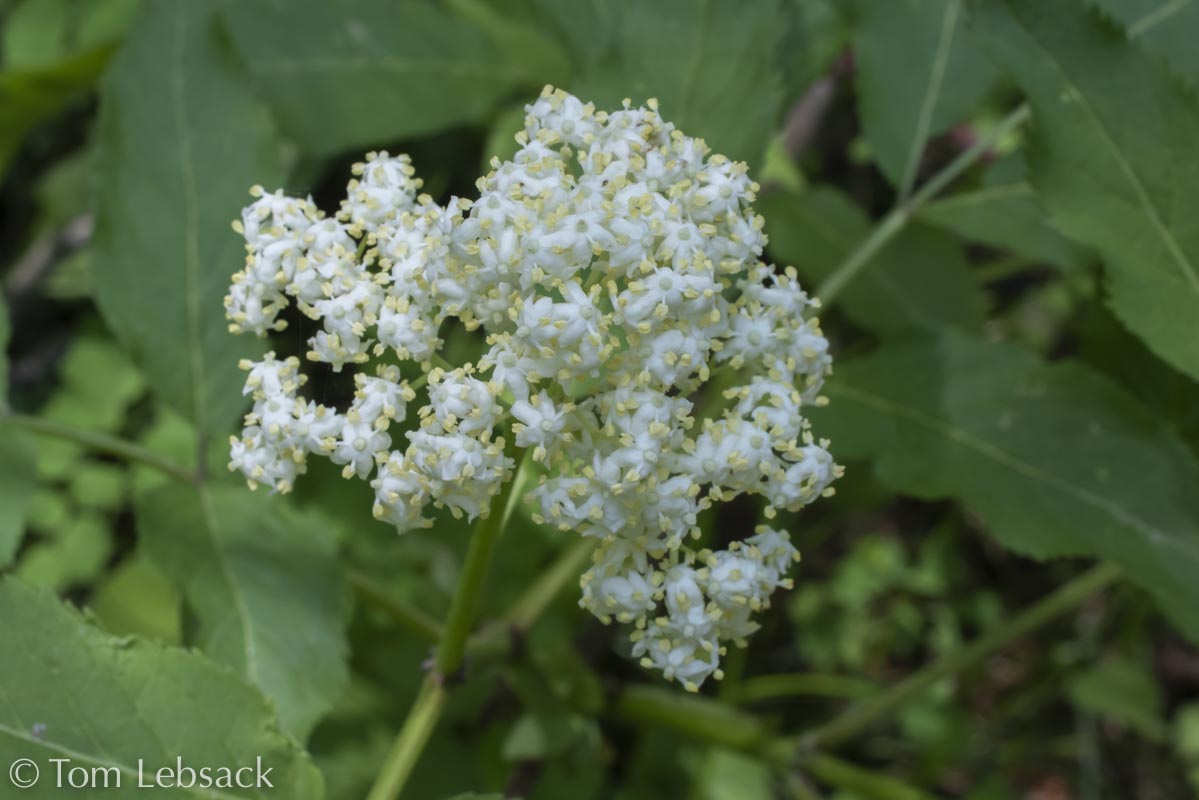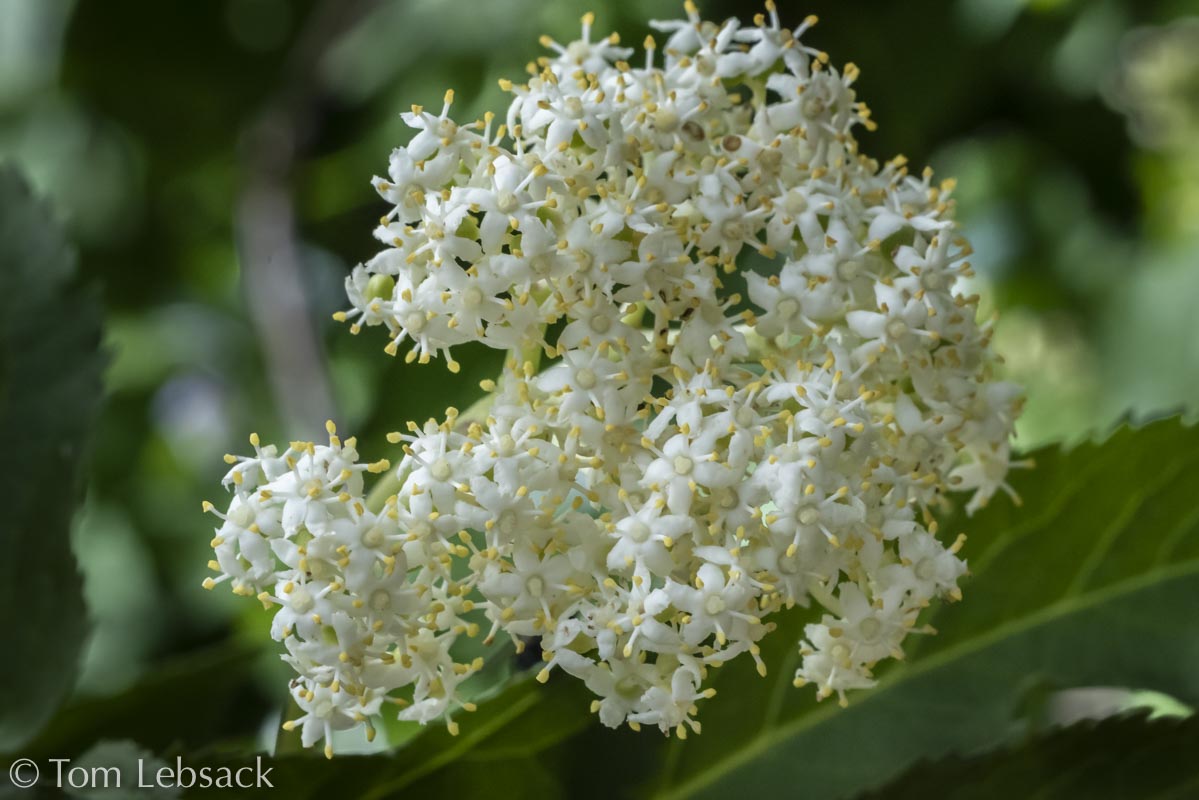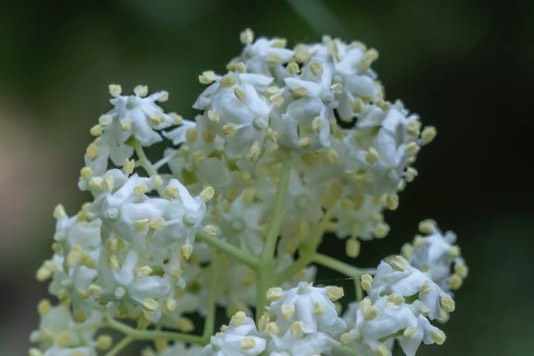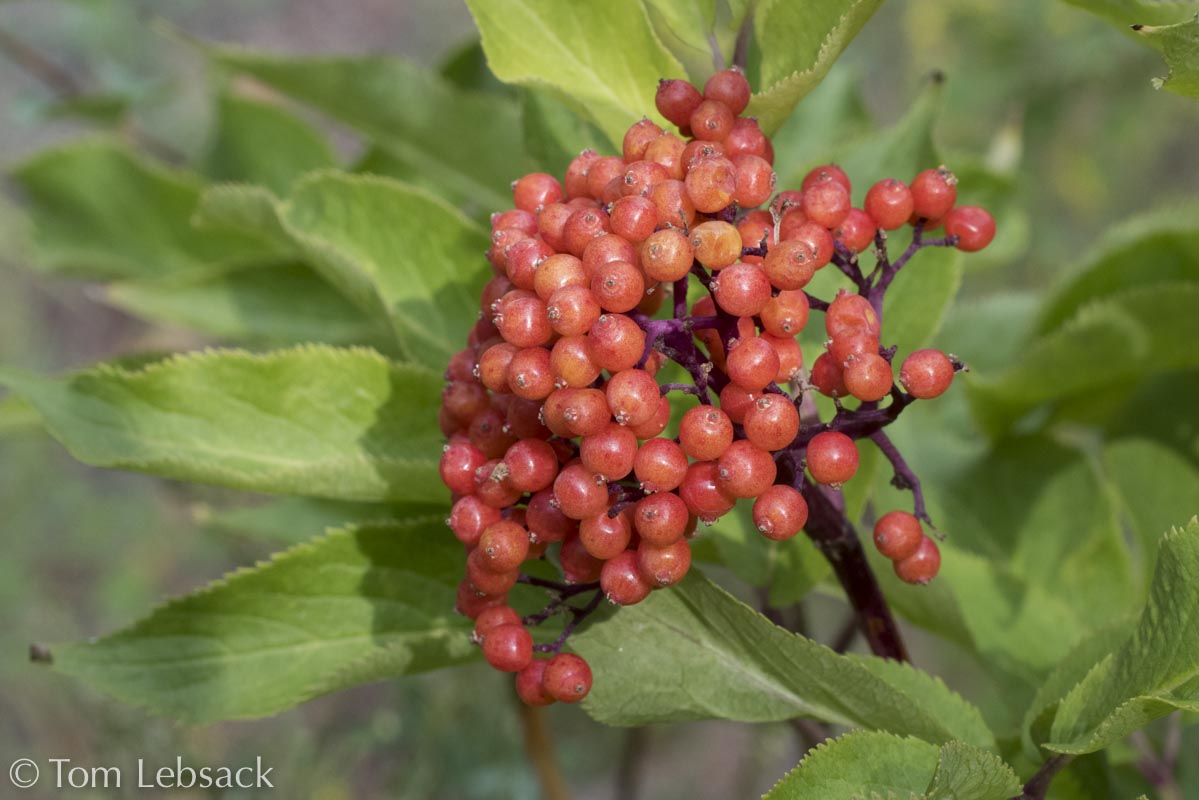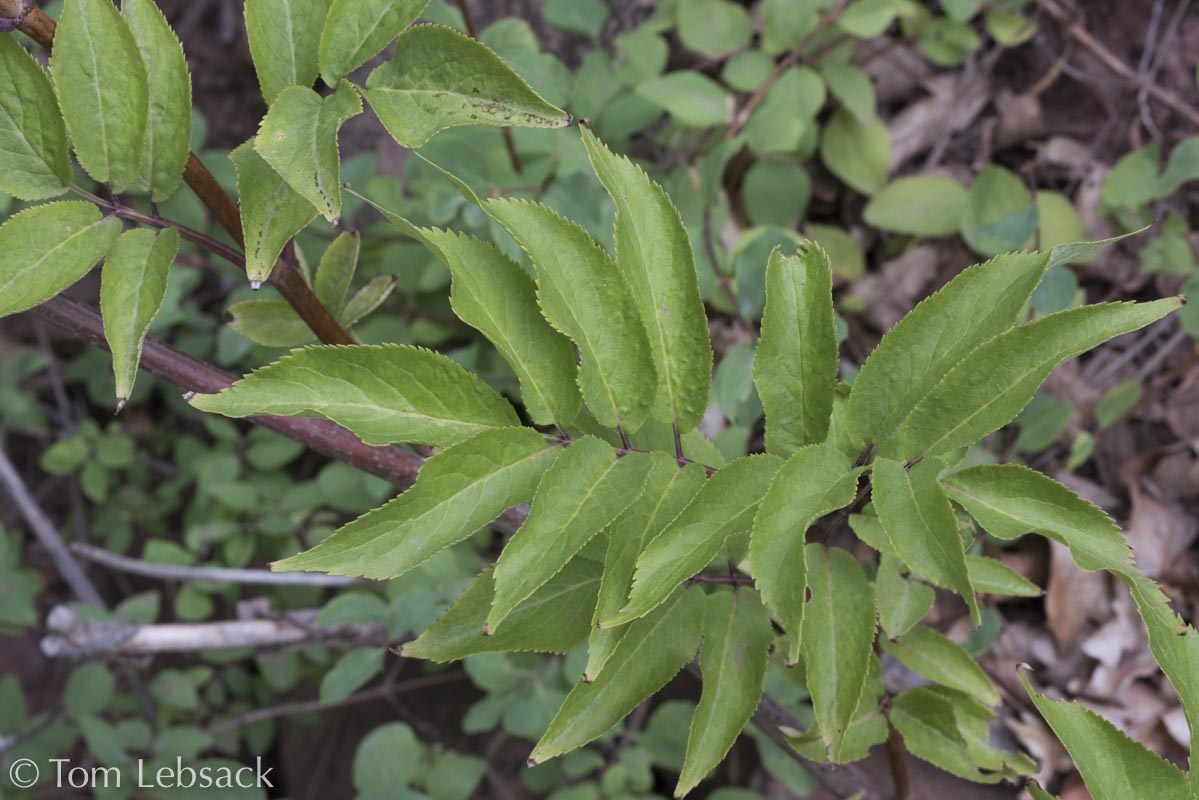(Red Elderberry)
| Scientific Name | Sambucus racemosa | USDA PLANTS Symbol | SARA2 |
| Common Name | Red Elderberry | ITIS Taxonomic Serial No. | 35326 |
| Family | Adoxaceae (Muskroot), formerly Caprifoliaceae | SEINet Reference |
Click Here |
| Description |
Life zones and habitat: Montane and subalpine (6500 to 12000 ft.); meadows, forest openings, streamsides. Plant: Bush 1-1/2 to 6-1/2 feet tall, many reddish branches. Leaves: Opposite, pinnately-compound leaves with 5 to 7 large (2 to 5 inches long) leaflets, each lanceolate to elliptic, pale green with coarsely toothed edges. Inflorescence: White or cream flowers clustered in egg-shaped compound cymes at tops of stems 1-1/2 to 4 inches long; each blossom about 1/8-inch across with 5 petals and stamens; yellow anthers. Bloom Period: May to August. Fruit: Clusters of berry-like drupes each about 1/4-inch across, red or yellowish. References: "Flora of Colorado" by Jennifer Ackerfield, "The Alpine Flora of the Rocky Mountains" by Richard W. Scott, "Wildflowers of the Rocky Mountains" by Carl Schreier and SEINet Note: The first two references above describe the variety microbotrys as being present in the Rocky Mountains and identifiable by the color of the berries (red to yellowish) as shown in photo above. Another variety, melanocarpa has purple or black fruit. Other authorities do not differentiate the varieties in this way and lump the elderberries together. |
BONAP Distribution Map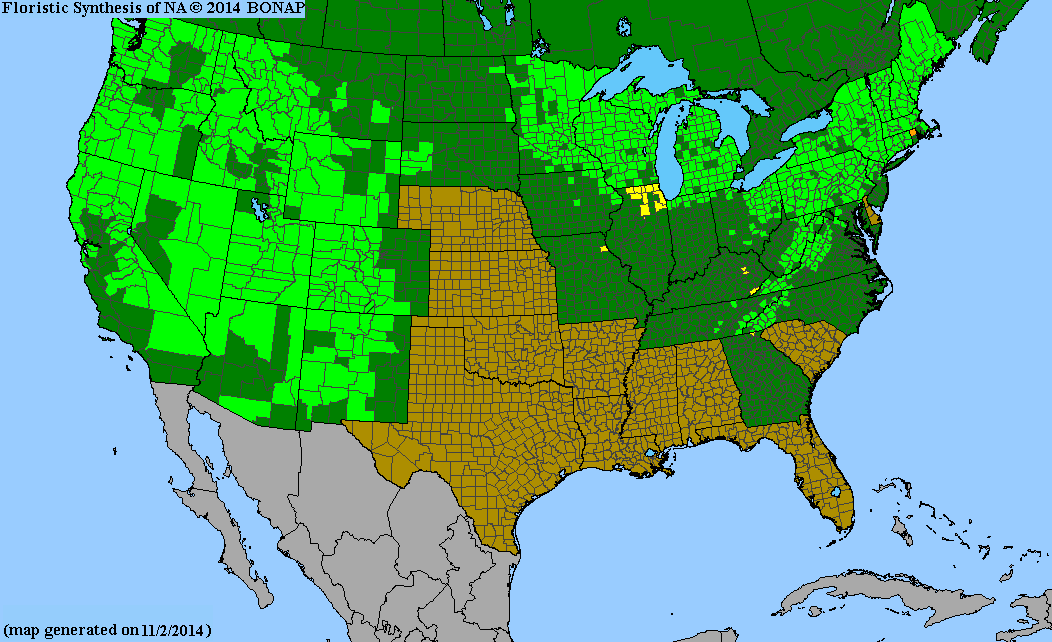 Map Color Key |
Colorado Status: Native |
© Tom Lebsack 2025
Banner photo: Castilleja rhexifolia and a brewing storm over the San Juan Mountains
I try to provide accurate, up-to-date, and relevant information, but cannot guarantee the completeness or accuracy of any information presented on this website. I use authoritative references to insure high standards of accuracy and review and update the information frequently.
